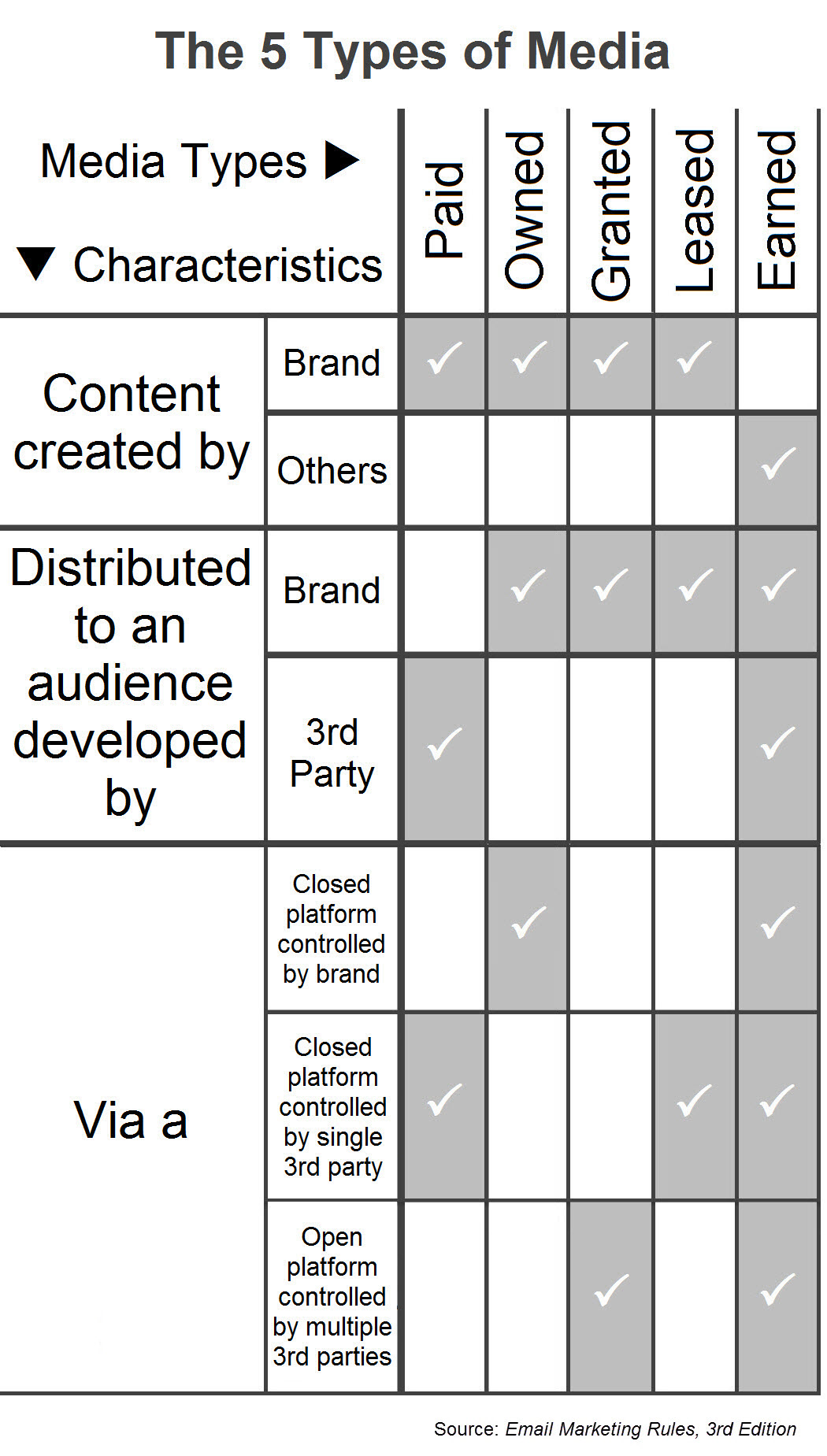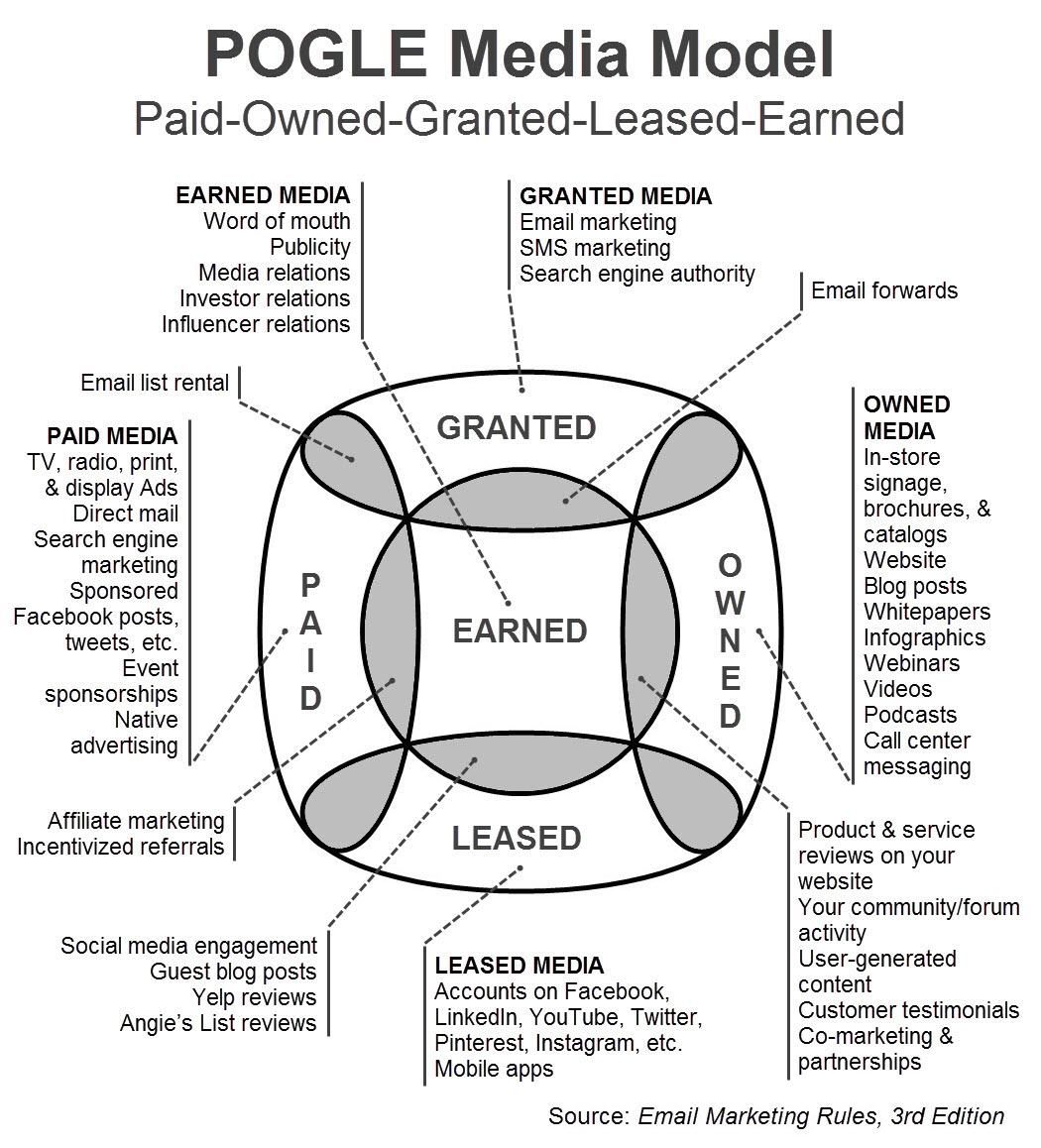Email is the worst and most frustrating kind of owned media—because it’s not owned media at all. Email is like a pet dog. He doesn’t behave just because you “own” him.
If you think of email marketing as owned media, chances are that you struggle. Perhaps you rail against Outlook messing up your email designs. Perhaps you curse Gmail for not delivering your emails. Perhaps you get angry when people who opted in to get your emails then mark them as spam. Or perhaps you bristle at the thought of suppressing emails to subscribers who haven’t opened your emails in years. After all, they gave you permission. You own those email addresses.
It’s difficult to succeed with email marketing if you think of it like catalogs, direct mail, store signage, and other owned media. While brands create the content of their email messages and develop the audience that their emails are sent to, they don’t control the platform used to distribute that message. Inbox providers and email users control the platform.
That said, if you’ve always thought of email marketing as owned media, you can be forgiven. After all, if email isn’t owned media, then where does it fit into the paid-owned-earned (POE) media model? It’s not paid, because brands are not paying to reach an audience developed by a third-party. And it’s not earned, because the brand is creating the message, not consumers.
The problem is that the POE media model just can’t accommodate all digital marketing channels. While it did a good job describing traditional media, it can’t account for most digital channels, which have generally been stuffed awkwardly into the owned media bucket.
We need new language and a new framework to describe marketers’ various channel activities to bring greater clarity to the marketing mix.
The POGLE Media Model
Three characteristics describe the channel activities available to us today:
- Who creates the content
- Who developed the audience
- Who controls the platform
It’s that third characteristic that requires most digital channels to be broken out of the owned media category and placed in two new categories: granted media and leased media. Adding those two to the three classic media types gives us the paid-owned-granted-leased-earned (POGLE) media model, which I discuss in my book, Email Marketing Rules.

Here’s a breakdown of what each element of the POGLE media model entails…
Paid Media
Content created by the brand that’s distributed to an audience developed by a third party via a closed platform controlled by the third party.
Paid media activities include TV ads, product placements, print ads, radio ads, display ads, social media ads, ads in emails, native advertising, sponsorships, and direct mail.
The defining characteristic of paid media is that the audience for your content was developed by a third party. Regardless of the media channel, anytime you’re paying to reach an audience that you didn’t develop, it’s paid media. Basically, this is any kind of advertising.
The rise of digital channels has created more paid media opportunities, while simultaneously degrading the impact of many types of advertising because of ad blocking and “banner blindness.”
The next media type in the POGLE media model is…
Owned Media
Content created by the brand that’s distributed to an audience developed by the brand via a closed platform controlled by the brand.
Owned media activities include store signage, product packaging, website and blog content, and press releases.
The defining characteristic of owned media is that the brand has more-or-less complete control over the content, audience, and platform. Provided no laws are being violated, no one but you controls what your product packaging looks like or what content is on your website, for instance.
When defining owned media this way, it becomes clear that many of the activities that occur in social media, email marketing, and other digital channels don’t belong in this media category, as control is far from absolute. Instead, they belong in the POGLE media model’s granted media and leased media categories, which we’ll talk about next.
Granted Media
Content created by the brand that’s distributed to an audience developed by the brand via an open platform controlled by multiple third parties.
Granted media activities include email marketing, SMS/MMS marketing, and organic search.
The defining characteristic of granted media is that it is brand content distributed via an open platform, which gives the platform great reach but at the cost of having many masters, which are active participants in the channel.
Inbox providers junk and block emails from senders who their users indicate aren’t sending relevant emails, and they provide different tools and functionality to their users, leading to uneven subscriber experiences across channels for brands.
As I argue in Email Marketing Rules, it’s the open platform that is the source of email marketing’s strengths—its ubiquity, vast reach, and low cost of use. For instance, the number of email users worldwide will grow to more than 4 billion by 2020, according to Radicati Group forecasts. And consumers and workers spend hours a day interacting with emails, according to Adobe’s Email Survey 2016.
And U.S. marketers can expect an average return on investment of $44 for every dollar they spend on email marketing, according to Campaign Monitor’s 2016 Year in Review.
The open platform is also the source of all of email’s weaknesses—chiefly, its troublesome deliverability, inconsistent rendering, and patchwork of coding and support standards. Of course, these drawbacks are greatly outweighed by the email channel’s strengths, as evidenced by email marketing’s channel-leading ROI and by brands’ continued plans to invest more in the channel. Fifty-eight percent of marketers said they would increase email marketing budgets in 2017, according to a GetResponse survey of 2,510 digital marketers globally, making it the top channel for investment in 2017.
Leased Media
Content created by the brand that’s distributed to an audience developed by the brand via a closed platform controlled by a single third party.
Leased media activities include social marketing, social customer service, apps built on social media platforms, and mobile apps.
As others have suggested, I agree that much of the activity that takes place on social media is better classified as leased media (or rented media) rather than owned media. This is because social networks, for instance, can and do change the rules whenever they want since they own the entirety of the platform. In particular, Facebook changes the rules of engagement frequently.
Also, social networks can fall out of favor or even disappear completely, taking all of a brand’s content and audience with it, as we’ve seen with Friendster, MySpace, and others.
While the term leased media was coined to describe social media activities, it also describes mobile apps well. Brands can’t change their mobile apps like they can their website content. Apps need approval and distribution through Apple, Google, and Microsoft, which retain the power to veto your app. And your app becomes useless if these mobile operating systems go belly up. So while we tend to think of mobile apps as being equivalent to the owned media of our websites, that’s not completely true.
The final media type in the POGLE media model is…
Earned Media
Content created by others that’s distributed to an audience developed by anyone via any platform.
Earned media activities include publicity, word of mouth, ratings and reviews, email forwards, and social media sharing and conversations.
The defining characteristic of earned media is that your brand did not create the content. Strangers, reporters, bloggers, and your customers, prospects, partners, employees, and others created it. Since the brand doesn’t control the content, sometimes it’s negative. However, when it’s positive, these messages are much more powerful than those created by the brand.
The Big Picture
Even with five types of media within the POGLE Media Model, some marketing activities straddle two media types. For instance, email list rental is a hybrid of paid and granted media, and product reviews on your website are a hybrid of earned and owned media.
Putting all those realms of influence together looks like this…

How This Impacts the Marketing Mix
Understanding the POGLE media model can help you better craft your marketing mix, audience-building efforts, and customer journeys.
It starts with figuring out the cost-value for each of your audiences, because an email subscriber, a Facebook fan, and catalog subscriber, for example, all have different costs associated with acquiring and reaching them and generate different amounts of value for brands. This will give you better visibility into where to focus your efforts and how best to create customer journeys that build high value-audiences.
In general, that will likely lead to campaigns that use paid media to drive engagement further down the funnel in leased, granted, and owned media—and that use leased media to drive engagement in granted and owned media.
For instance, it has become increasingly clear that social networks are not the best place to build audiences and not a great place for long-tail content because of the leased media nature of social publishing. Social networks excel at real-time conversations, short-term contests, and similarly ephemeral content, which play to social media strengths in earned media activities like social conversations and amplification.
More substantial content is better hosted on your owned media website or blog, and then integrated into an email marketing program, making use of the unparalleled reach and stability of this granted media activity.
The media landscape is more complex than the paid-owned-earned (POE) media model would lead us to believe. To better accommodate digital media activities, it’s time to add granted media and leased media to the mix and recognize the uniqueness of those media types.
Doing so eliminates a major misunderstanding about the email marketing channel that causes marketers to underperform and executives to provide poor leadership. That said, it’s just one of many points of misunderstanding about the channel.
We’d like to help.
Company leadership doesn’t always fully understand the value of email marketing, and that creates unnecessary tension and underperformance. Litmus has identified a number of key email marketing topics and assembled 1-page briefs that marketers can share with management, including one on Staffing for Email Marketing Success and another on Why Bad Omnichannel Experiences May Be Slowing Your Email List Growth.
Download that and other 1-page briefs from our Email Marketing Leadership series for free.
Email Marketing Leadership SeriesFree one-page, printer-friendly summaries on critical email marketing issues that you can share with the leadership at your company. |
The info in this blog is 2+ years old and may not be updated. See something off? Let us know at hello@litmus.com.
Chad S. White is the Head of Research at Oracle Digital Experience Agency.
